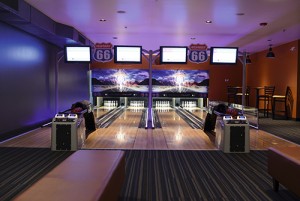Bowling is a popular pastime among families and friends, but from a leisure industry point of view, it is so much more than that.


IF a family entertainment centre is an anchor attraction to a shopping development, then equally a bowling complex is an anchor to the FEC. So is a multiplex cinema, of course, or a giant children’s softplay installation or even an ice skating rink. In essence, they are all complementary to one-another, without competing for visitors’ spend and all of them vital to the success of the coin-op games in the same location.
In truth, the coin-op is actually peripheral to those anchors, but everyone – on both the coin-op side and the bowling (in this case) side – agrees that all of these activities dovetail naturally to provide an overall entertainment offering to the FEC. The usefulness of an FEC to aid footfall in a shopping or leisure complex is well documented, but the impact and effect of each contributing sector within the FEC to one-another is far less so. Coin-op people look at the machines, how they are kept, how they are displayed, the all-important juxtaposition of the games, the prizes on offer and the operational style… They probably never look at the tenpin bowling location that they support…
A developer of say, a shopping mall, will carefully evaluate income per square foot throughout the complex. That would include the top floor – the usual location for the FEC – where he will have a slightly different expectation level; after all, shoppers are less likely to venture upstairs. Nevertheless the income PSF is important. An FEC operator – if it’s not actually the developer himself – will look at what he can earn from 25 machines in a line and then look at what he would be likely to get back from one bowling lane occupying around the same space. The consideration doesn’t last long; machines would earn more, but the machines wouldn’t be there if it wasn’t for the bowling.
Read the full article in the June issue of InterGame.

